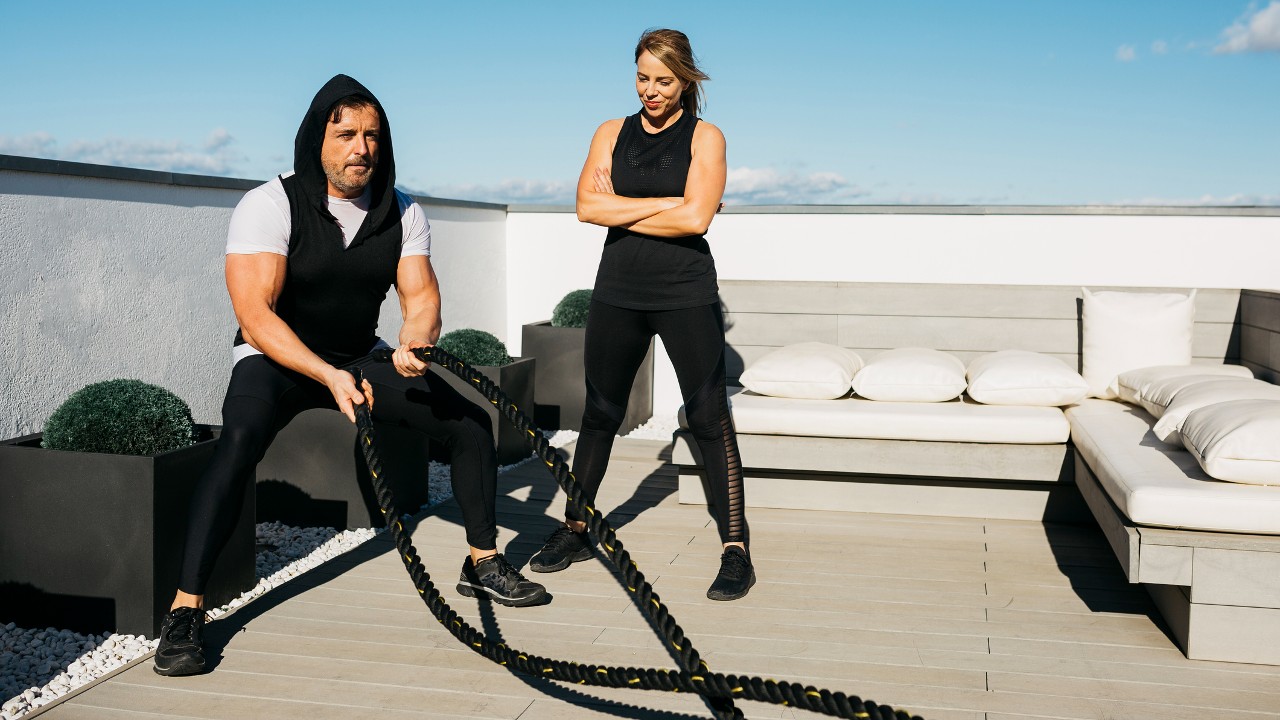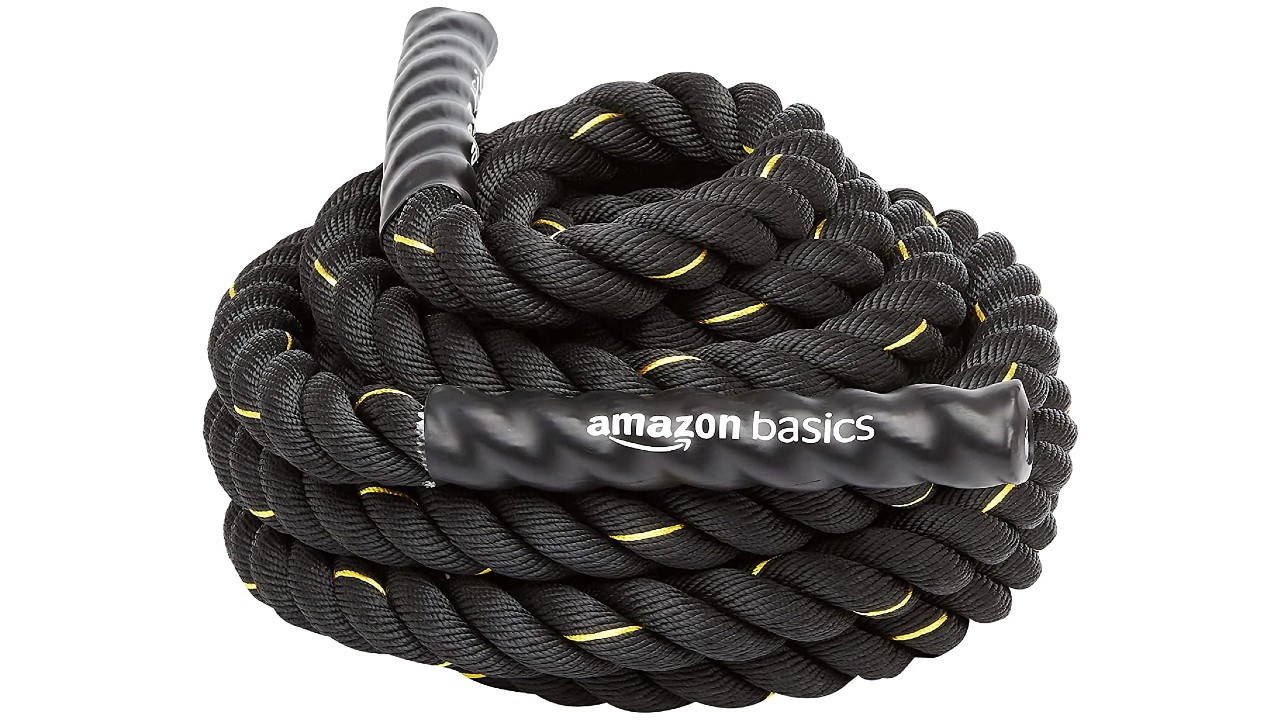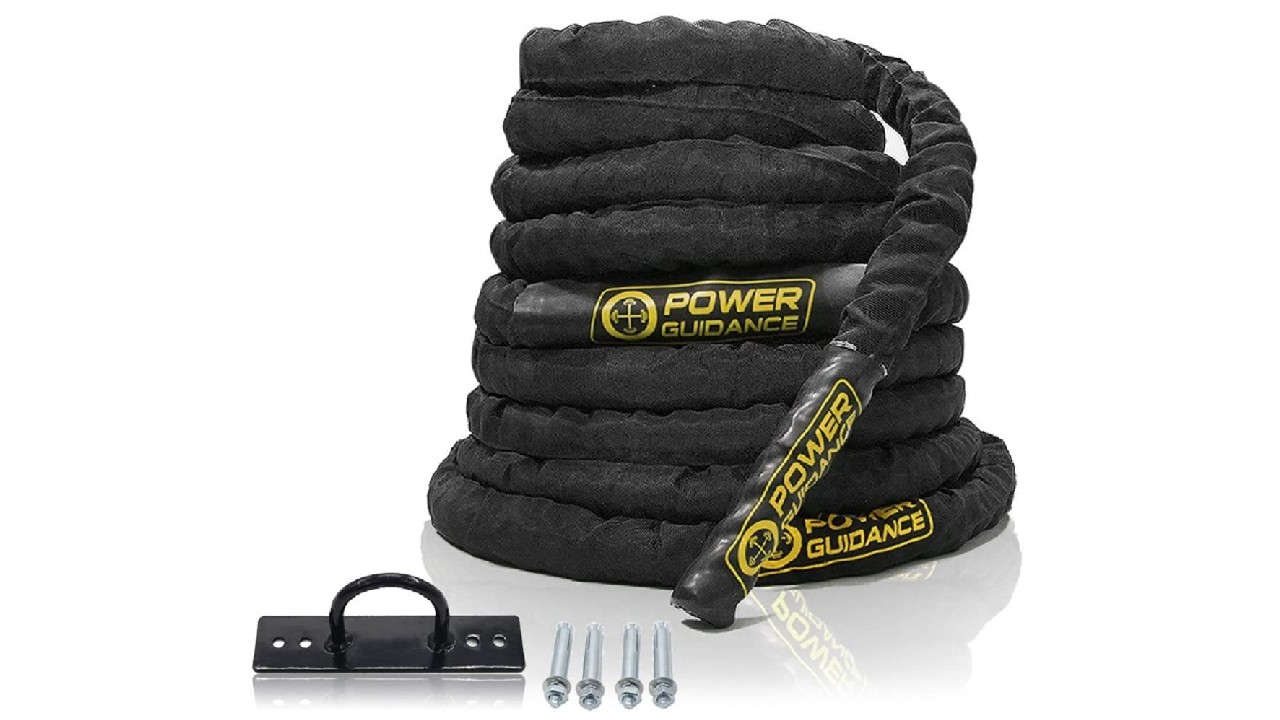The Best Battle Ropes
Kit out your home gym with the best combat ropes for HIIT and strength workouts

There is something immensely satisfying about using battle ropes. It’s not just that they offer an effective way to increase strength and get your heart pumping. There’s an undeniably pleasing aspect to using a heavy rope to achieve this, rather than weights or a machine.
Then there’s the fact that using combat ropes correctly often means sending rhythmic waves down the ropes. Again, pleasing.
Battle rope exercises are great for HIIT workouts in particular, and they’re now a common sight in gyms, CrossFit boxes and anywhere else people exercise. You’ll need a fairly large amount of space if you want to bring the magic of battle ropes home. We’ve picked out some of the best ropes below, but if you’re unsure of what kind of rope is best for you, read on for our battle rope buyer’s guide.
The Best Battle Ropes

Amazon Basics Exercise Rope
Specifications
Reasons to buy
Reasons to avoid
If you’re new to battle ropes or just intend to use them sparingly as part of your home workouts, then the Amazon Basics rope offers great value. It comes in a range of lengths and thicknesses (though the different options will come in and out of stock, so they often aren’t all available), and it’s a lot cheaper than most other ropes. It might not be as long-lasting as more expensive ropes if you’re intending to give it a lot of use, but it will serve the needs of most home users well.

Power Guidance Battle Rope
Specifications
Reasons to buy
Reasons to avoid
While having a cover on your battle rope is far from essential, this rope’s nylon sleeve will make it a little more durable if you’re using it outside on rough surfaces. The rope also comes with a mount and there are three lengths and two thicknesses to pick from.

Titan Fitness Battle Rope
Specifications
Reasons to buy
Reasons to avoid
These hardy ropes are ideal for home HIIT sessions, with a durable design and a comfortable, long handle that makes it easier to maintain your grip when swinging and flinging them around. The rope comes in three lengths and two thicknesses, and has a one-year warranty.

Fitness Solutions Battle Rope
Specifications
Reasons to buy
Reasons to avoid
If you’re craving the natural look, this manila hemp rope from Fitness Solutions is our top pick. The range of lengths is incredible, running from 16.5ft up to 100ft, so there’s an option to fit home gyms of all sizes. Just be aware that a natural manila rope will shed fibres during workouts, so only use it outside or somewhere that’s easy to clean up afterwards.
Battle Ropes Buyer’s Guide
While battle ropes are a fairly simple piece of kit, there are still three key decisions to make when buying them. These relate to the length and thickness of the rope, and the material used.
How long should a battle rope be?
Whichever length you pick, remember that the actual length of your rope will be halved once you pass it through the mount and use it, which will help you judge if you have enough room. The most common lengths are 30, 40 and 50ft (9.1, 12.2 and 15.2m), with 50ft ropes being the standard. A longer rope allows for more fluid use because the waves you send down the rope have more room to travel. Shorter ropes naturally work better if you don’t have much space, and you can find ropes as short as 10ft (3m) for a small room, but these will feel more jerky as the waves you create hit the wall quickly.
How thick should a battle rope be?
The three most common thicknesses for battle ropes are 1.5, 2 and 2.5in (3.8, 5 and 6.3cm). These might seem like small differences but thicker ropes are heavier and harder to use, and you’ll need huge hands to grip them. A 1.5in rope is best for everyone for HIIT and cardio workouts, while thicker, heavier ropes can be helpful for more strength-focused sessions. In general, unless you’re a battle ropes veteran with big hands, or a sailor used to flinging giant ropes around a ship’s deck, get a 1.5in rope.
What materials are battle ropes made of?
Rope materials are either natural or synthetic: the most common natural one is manila hemp and the standard synthetic one is poly dacron. Manila ropes give you that natural look, but poly dacron synthetic ropes don’t shed fibres like manila ropes, making them better for using inside, and they don’t absorb water. Poly dacron is usually the best battle rope material for most people’s purposes; just be aware the rope will feel quite stiff at first and takes a couple of uses to loosen up.
Do you need a sleeve for your battle rope?
Some battle ropes come with a sleeve, and you can also buy these separately. The sleeve is designed to protect the rope and make it last longer. If your rope comes with one there is no real downside, but sleeves are not really necessary. The ropes themselves will be hard-wearing and can handle scuffing during your workouts.
What else do you need to use your battle rope?
A mount or anchor is the only other key bit of kit you need to use your rope. This needs to be pretty heavy duty to hold the rope in place while you wave it about. Many battle ropes come with a mount, but if not you can pick one up for around $10-20/£10-20. You can also just wrap your rope around a tree or pole, though a mount will be better for keeping it stable while you swing.
Sign up for workout ideas, training advice, reviews of the latest gear and more.

Nick Harris-Fry is a journalist who has been covering health and fitness since 2015. Nick is an avid runner, covering 70-110km a week, which gives him ample opportunity to test a wide range of running shoes and running gear. He is also the chief tester for fitness trackers and running watches, treadmills and exercise bikes, and workout headphones.
